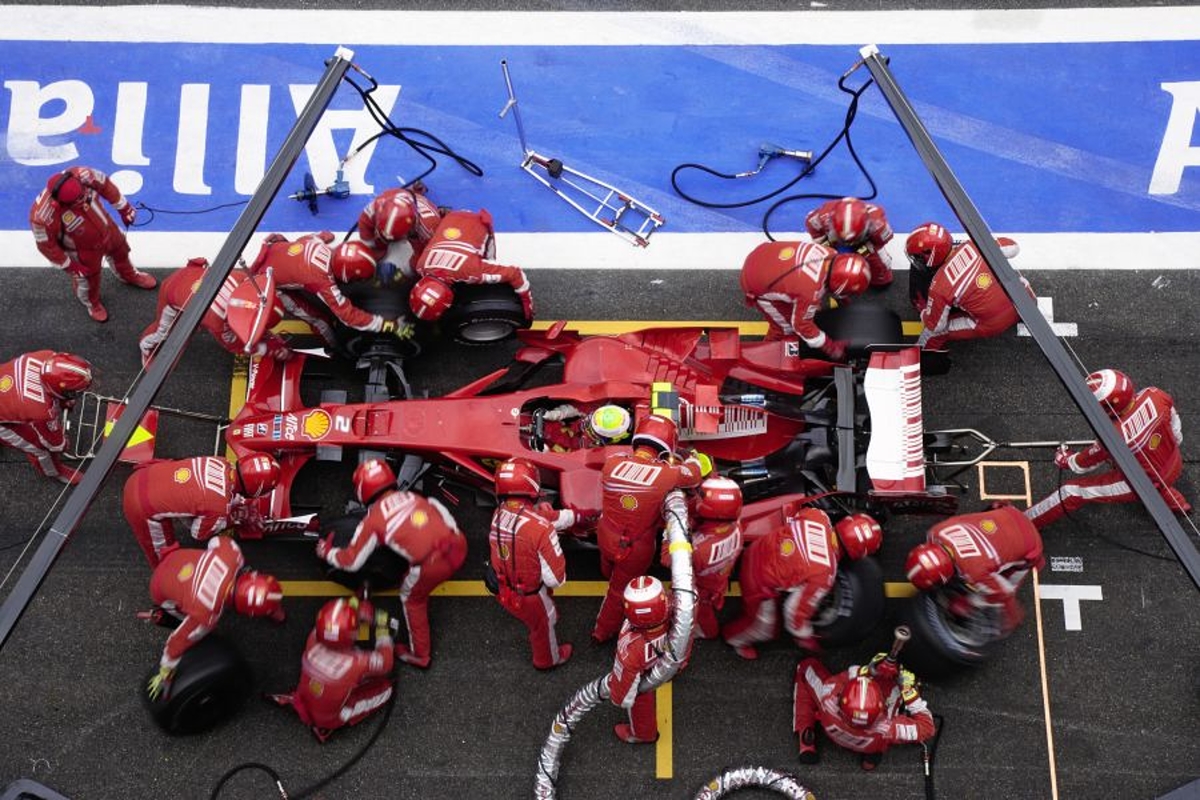The History and Impact of Refueling in Formula 1: From Innovation to Banishment
For many fans of modern Formula 1 (F1), the idea of cars stopping mid-race to refuel seems almost bizarre. Today, every car starts the race with enough fuel to complete the entire Grand Prix, and pit stops are reserved solely for changing tires. However, this wasn’t always the case. For 16 years, from 1994 until the end of 2009, refueling was not only legal, but it was a cornerstone of race strategy. It dictated race rhythms, influenced qualifying formats, and shaped how teams designed their cars. The decision to ban refueling for the 2010 season wasn’t a spur-of-the-moment reaction; it was the result of years of debate over safety, cost concerns, and whether refueling improved the quality of racing. To understand why refueling was introduced, why it stayed for so long, and why it was eventually removed, we need to dive deep into its history and explore the mechanics that made it such a defining feature of the sport during its era.

The Beginnings of Refueling in Formula 1
Although the reintroduction of refueling in 1994 is often seen as the starting point of the practice in modern F1, the idea of mid-race fuel stops has been part of the sport since its very early days. In the 1950s, it wasn’t uncommon for drivers to stop to top up fuel, especially on long and demanding circuits like the Nurburgring or Spa-Francorchamps. At the time, cars were less fuel-efficient, and a fuel stop was often an unavoidable necessity, rather than a strategic option. However, as the decades passed and engineering improved, fuel tank sizes increased, and fuel efficiency advanced to the point where most races could be completed without the need for refueling.
Refueling for Performance: The 1980s
The 1980s brought the first instances of refueling being used not out of necessity, but as a deliberate performance advantage. In 1982, Brabham, under the leadership of designer Gordon Murray, introduced a strategy where cars started races with less fuel than needed for the full race distance. By starting lighter, the cars would be faster in the early stages of the race. They would then make a pit stop to refuel and change tires, before attacking again. The strategy, although controversial, worked. Nelson Piquet took victories using this method, and soon, other teams followed suit.
However, the FIA, concerned with the safety risks and the rising costs of more complex pit equipment, banned refueling in 1984. For the next decade, F1 cars were once again required to carry enough fuel to finish the race without stopping. But in 1993, the FIA’s World Motorsport Council voted to reintroduce refueling for the 1994 season, ushering in a new era for Formula 1.

The 1994 Reintroduction: A New Era
The reintroduction of refueling in 1994 was seen as a way to spice up the racing and increase strategic complexity. By allowing teams to start with less fuel, they could make cars lighter and faster in the early laps, only to stop more often throughout the race. The strategy could vary between teams—some would start heavy and pit once, while others would start light, pit frequently, and aim to gain positions through faster lap times before and after their pit stops. This variety in strategies was expected to lead to more exciting on-track battles between cars with different fuel loads and tire conditions.
Refueling also had a significant impact on the spectacle of Formula 1. Pit stops became much longer, more dramatic, and more crucial to the outcome of the race. This added a new layer of drama to the sport, making the pit lane almost as important as the racetrack itself.
The Mechanics and Safety Concerns
The new refueling equipment introduced in 1994 was highly standardized across the grid, ensuring all teams had access to rigs that could pump fuel at a rate of around 12 liters per second. These rigs featured dry brake nozzles that prevented spillage and included safety interlocks to ensure the fuel could only flow once the connection was secure. Teams could chill their fuel to make it denser, but only within tightly controlled temperature ranges.
Despite these precautions, the risks were significant. One of the most infamous incidents occurred during the 1994 German Grand Prix at Hockenheim, when Jos Verstappen, driving for Benetton, suffered a horrific fire in the pit lane after a faulty nozzle caused fuel to spill and ignite. Verstappen and his mechanics were engulfed in flames, but fortunately, Verstappen escaped with only minor burns. The incident led to the redesign of refueling rigs in 1995, with better locking mechanisms and more stringent safety checks.
Despite improvements, the dangers of refueling remained present throughout the refueling era. Fires, hose malfunctions, and accidents involving mechanics or departing cars remained an ever-present hazard.

Strategic Impact: The Art of the Pit Stop
Refueling quickly transformed the way races were strategized. Teams now had to carefully consider when to pit and how much fuel to carry, as these decisions could drastically affect a car’s performance. Drivers could run flat out in the early stages of the race when their cars were lighter, pit early, and try to gain positions through undercutting or overcutting—strategies where drivers would pit either before or after their rivals to gain a time advantage. Michael Schumacher, with his team principal Ross Brawn at Ferrari, became masters of this strategy, often winning races by pitting at the perfect moment rather than overtaking rivals on track.
Refueling also had a major impact on qualifying. Starting in 2003, cars were required to qualify with the fuel they intended to start the race with, leading to a shift in strategy. Drivers with a lighter fuel load could qualify higher, but they would have to pit sooner during the race. Meanwhile, heavier cars that qualified lower had the opportunity to gain back time by stopping less frequently.
In 2006, with the introduction of knockout qualifying, the top 10 drivers in Q3 were required to run with their intended starting fuel load. This led to the strange “fuel burn” phase, where drivers would purposefully drive slowly at the start of Q3 to burn off fuel weight before attempting their flying laps. Fans found this phase tedious, and in 2008, the FIA shortened Q3 to eliminate the fuel burn, though the top 10 still had to start with their qualifying fuel load.
The Decline of Refueling: Cost, Safety, and Strategy
By the late 2000s, it became clear that refueling wasn’t always delivering the spectacle that the FIA had hoped for. Many of the most important race changes took place off-camera, during pit stops, rather than through on-track overtaking. Drivers could gain positions entirely through strategic pit stops, and this often reduced the number of exciting on-track battles. Fans and pundits alike began to voice concerns that the most decisive moments of a race were happening away from the action, making the races feel less dynamic.
The financial costs of maintaining and transporting the refueling rigs were also becoming a concern. In an era when F1 was under pressure to reduce costs, refueling equipment, which required specialist crews and significant logistics, became a target for elimination. Additionally, the safety risks remained, with the possibility of accidents always present.
The End of the Refueling Era
By mid-2009, the FIA had decided that refueling would be banned starting in 2010. The final race with refueling was the Abu Dhabi Grand Prix in 2009, and from 2010 onwards, cars were required to carry enough fuel to complete the entire race distance. This change resulted in dramatically faster pit stops, reducing the time teams spent in the pit lane from 7 to 10 seconds to less than 3 seconds. Strategies shifted toward tire management, and overtaking on track became more important than leaping ahead in the pit lane.
The Legacy and Future of Refueling in Formula 1
Although refueling was banned in 2010, the debate about its potential return has not disappeared. In recent years, particularly when issues related to tire management and car weight have dominated headlines, there have been occasional discussions about reintroducing refueling. Advocates argue that lighter cars could lead to more agile racing and provide additional strategic options. However, the FIA remains firmly against its return due to safety concerns, the high costs of reintroducing refueling rigs, and the fact that current fuel flow limits would not result in a significant increase in racing excitement.
The era of refueling from 1994 to 2009 remains an important chapter in Formula 1’s history, remembered fondly by fans for its dramatic pit stops and strategic depth. However, in the modern era, with F1 focusing on sustainability and efficiency, it is unlikely that refueling will return, as the sport continues to evolve toward greener and safer solutions.
Refueling in F1 was an era that shaped the sport in ways many fans will never forget, but in the fast-paced world of motorsport, things move on, and the sport’s future looks very different from the days when pit stops could change the entire race.
News
Die Welt hat sich weitergedreht: Marie Fredriksson rechnet leise ab – 5 Stars, die sie im Stich ließen.
Der Klang von Roxette war der Soundtrack einer ganzen Generation. Mit Hits wie „It Must Have Been Love“ und „The…
Conny Froboess: Die bittere Wahrheit hinter der Traumkarriere – Im Alter trägt sie eine unheilbare Wunde.
Der Name Conny Froboess ist in Deutschland untrennbar mit einem Gefühl von Leichtigkeit und sonnigen Kindertagen verbunden. Wenn ihr größter…
DER WACKELDACKEL DER REPUBLIK: WIE MERZ’ „HERBST DER REFORMEN“ IN EINER EISZEIT DER STARRE ENDETE UND UNSERE ZUKUNFT VERPFÄNDET WIRD
Einbruch in die politische Wirklichkeit: Die bittere Bilanz nach dem Versprechen des Aufbruchs Mit großen Versprechungen begann die Zeit, die…
Bommes’ Nerven liegen blank: Unerwarteter Eklat in der letzten Folge von „Gefragt – Gejagt“ schockt die Fans
Ein Augenblick, der das harmonische Ende einer Quiz-Saison sprengte. Ausgerechnet in der vorerst letzten Ausgabe der erfolgreichen ARD-Show „Gefragt –…
Herzschlag-Finale in der Scheune: Friedrich und Laura trotzen dem TV-Kitsch mit dem ehrlichsten Liebesbeweis der Staffel
Der leise Moment, der lauter spricht als jede große Inszenierung Es war der Moment, auf den Millionen von Zuschauern der…
Kai Pflaume bricht sein Schweigen: Das 30-Jahre-Geheimnis hinter Deutschlands Vorzeige-Ehe und warum seine Ilke sein wichtigstes Korrektiv ist
Die deutsche Fernsehlandschaft hat viele Gesichter, aber nur wenige sind so konstant, so sympathisch und so untrennbar mit dem Gefühl…
End of content
No more pages to load












